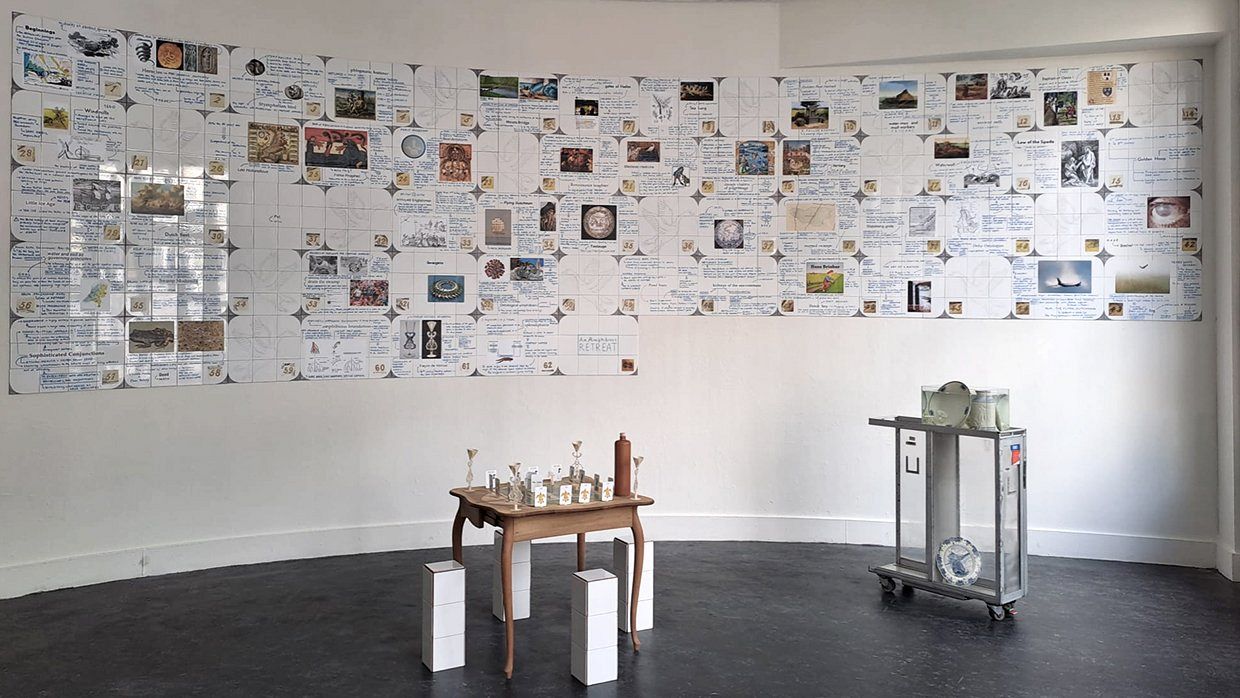
Stefano Dealessandri
Keywords: Wetlands, Royal delft, Goose game
“AnAmphibious Retreat” explores processes of vilification and re-evaluation of wetlands—transitional zones between land and water that resist rigid categorization. The project focuses particularly on the Netherlands, a country historically shaped by the drainage of wetlands, now reconsidering the reintegration of these very environments. Central to this investigation are the themes of ambiguity, instability, and decay.
The project engages with the fluid meanings of “retreat”—both as a withdrawal from deeply-rooted beliefs, and as a space for study or leisure. Through a visual essay, it reimagines amphibious environments as sites of experimentation, critical inquiry, and ecological transformation.
The work unfolds through an open-ended adaptation of the “Goose Game,” a 16th century board game originally from Italy, using its cyclical structure as a playful journey through the evolving meanings and layered histories of Western understandings of wetlands. On a material level, a process of decay and transformation is triggered by scratching the sealed surfaces of traditional Delft Blue ceramics, which depict images of extractive colonial dominion over the environment.
On top of this, the ephemerality of the materials used, such as 3D-printed bioplastic, degradable in marine environments, and water-soluble blue ink, reflects the instability and transience of both this research and the environments being considered.
“AnAmphibious” functions as a deliberate linguistic glitch, suggesting both an indefinite article and a prefix of negation. It gestures toward the project’s core skepticism: can amphibious logics truly infiltrate systems historically designed to oppose them?
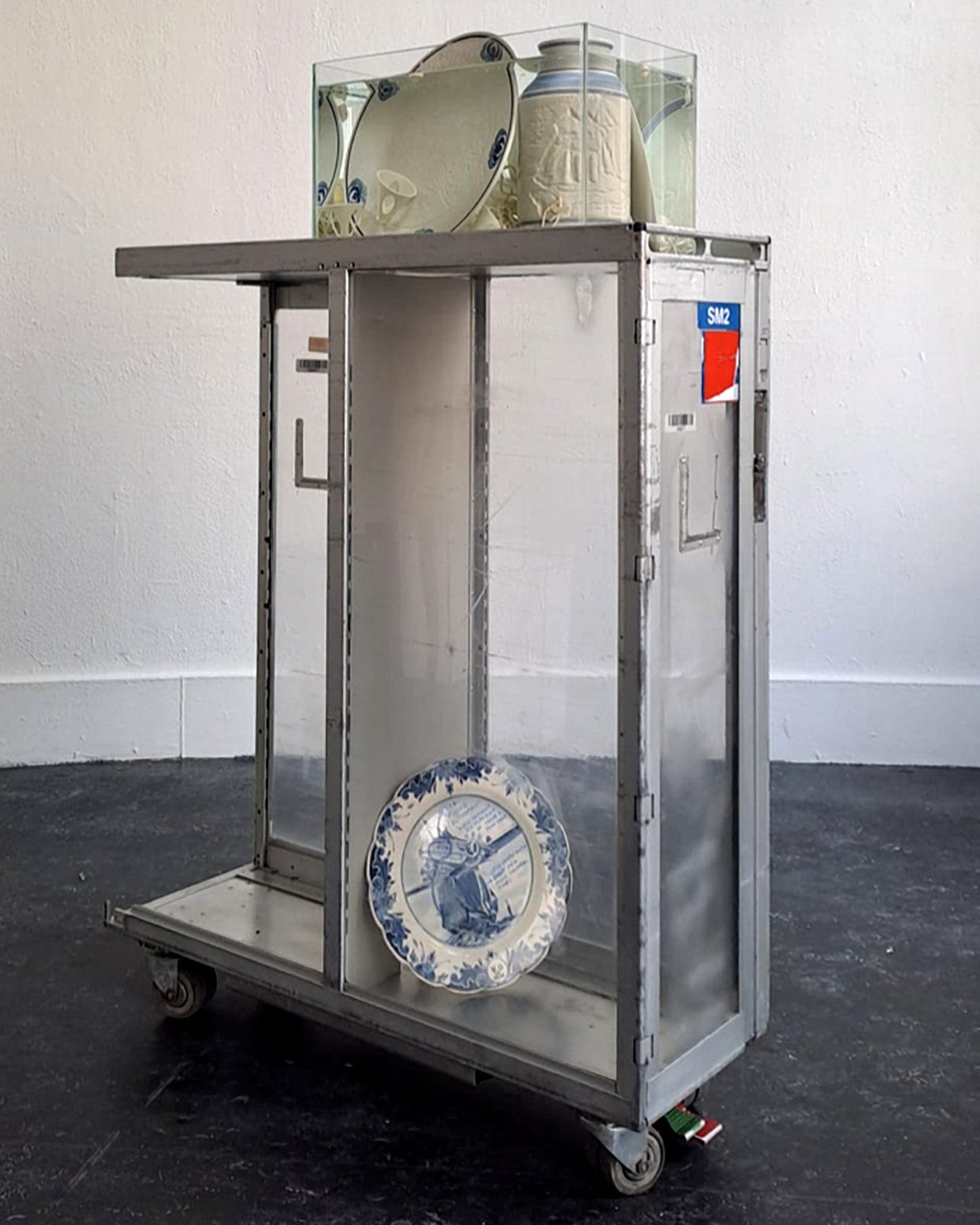
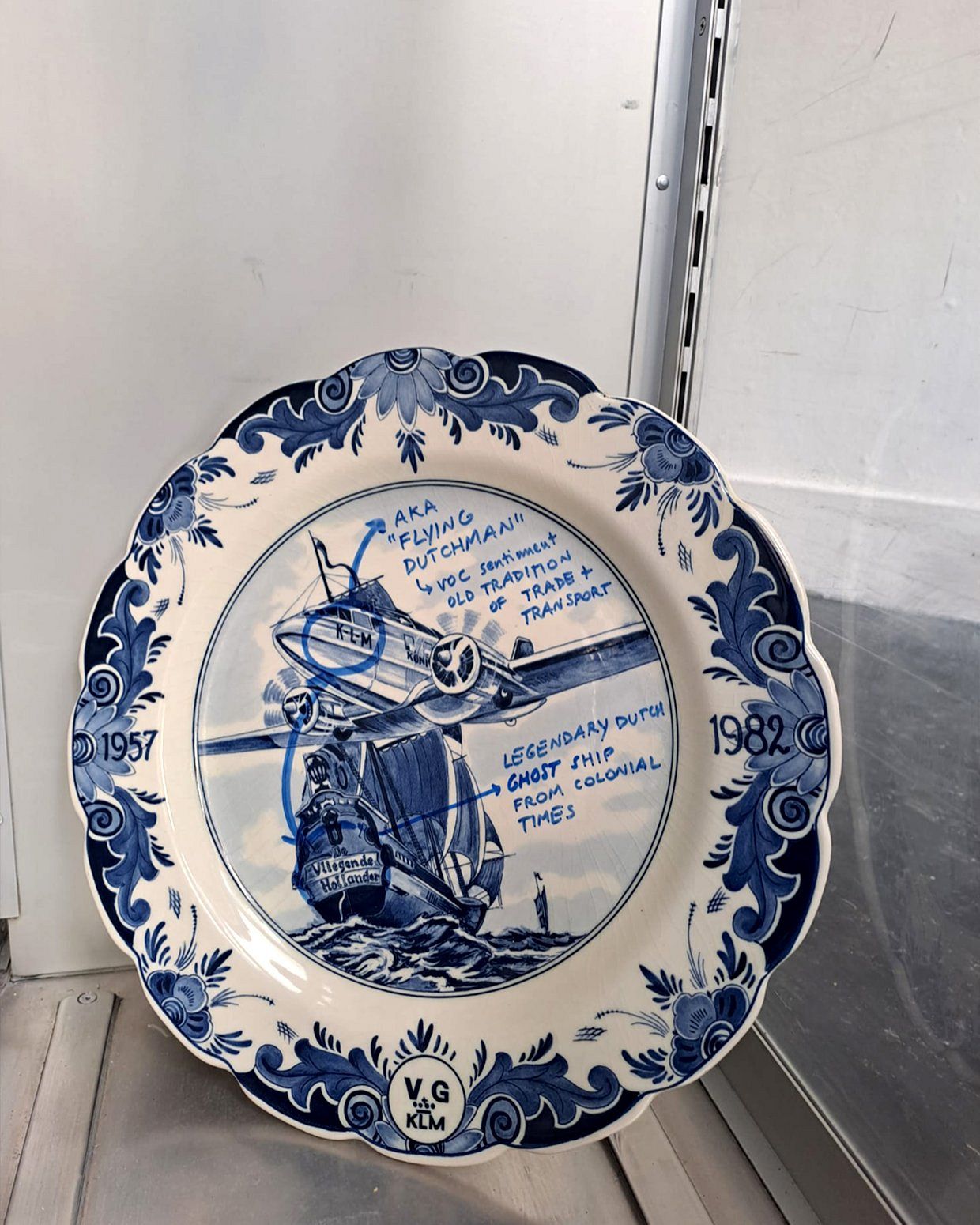
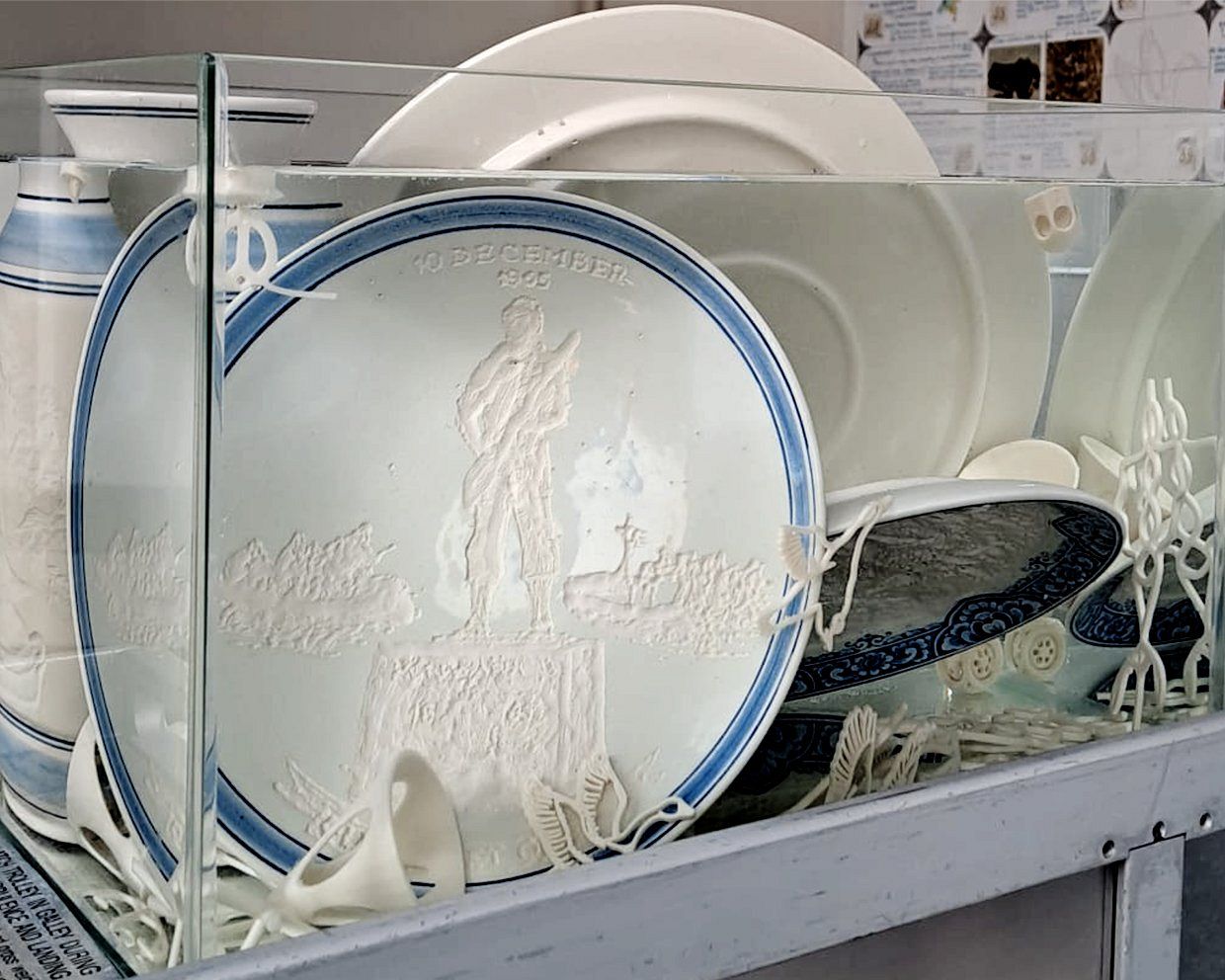
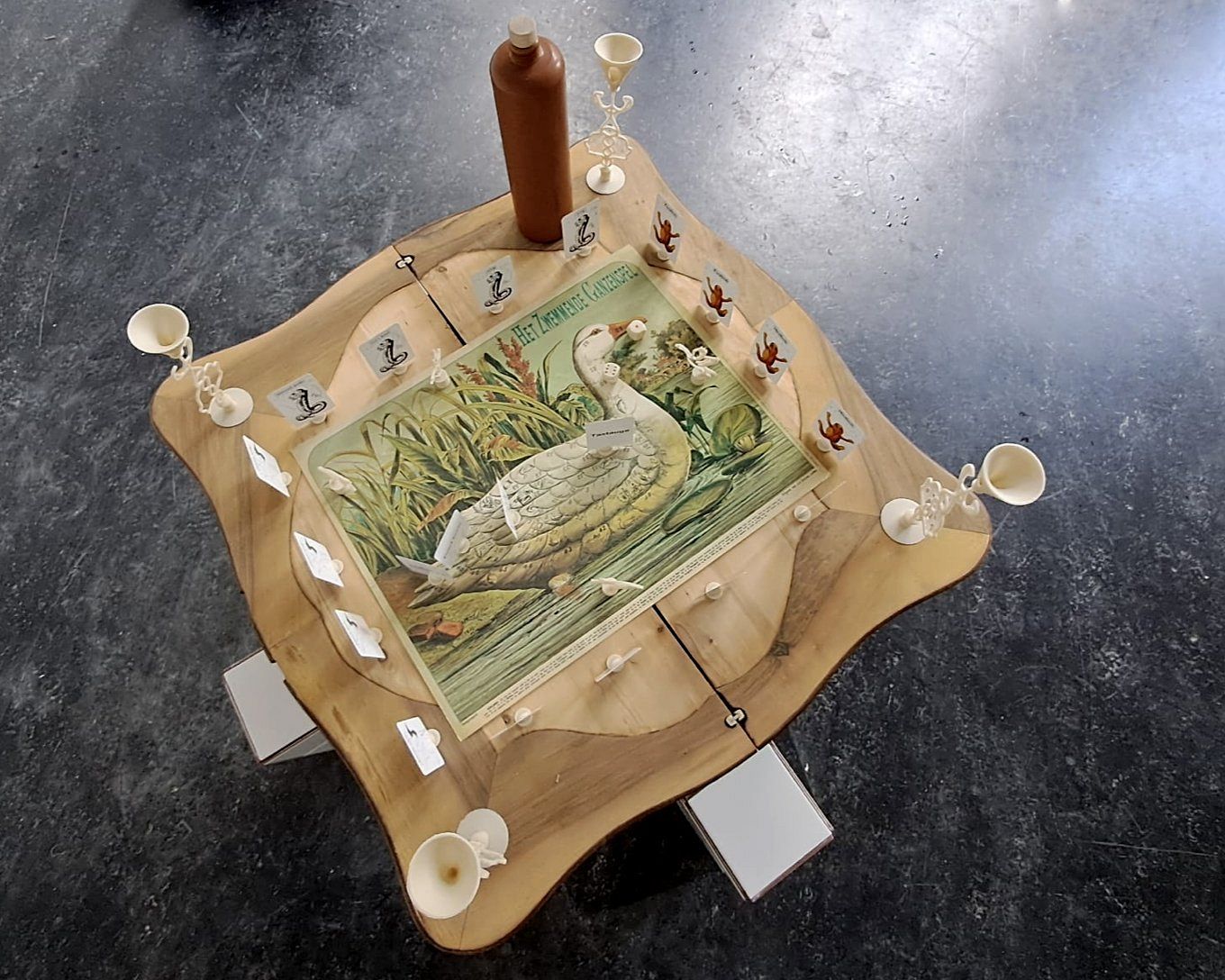
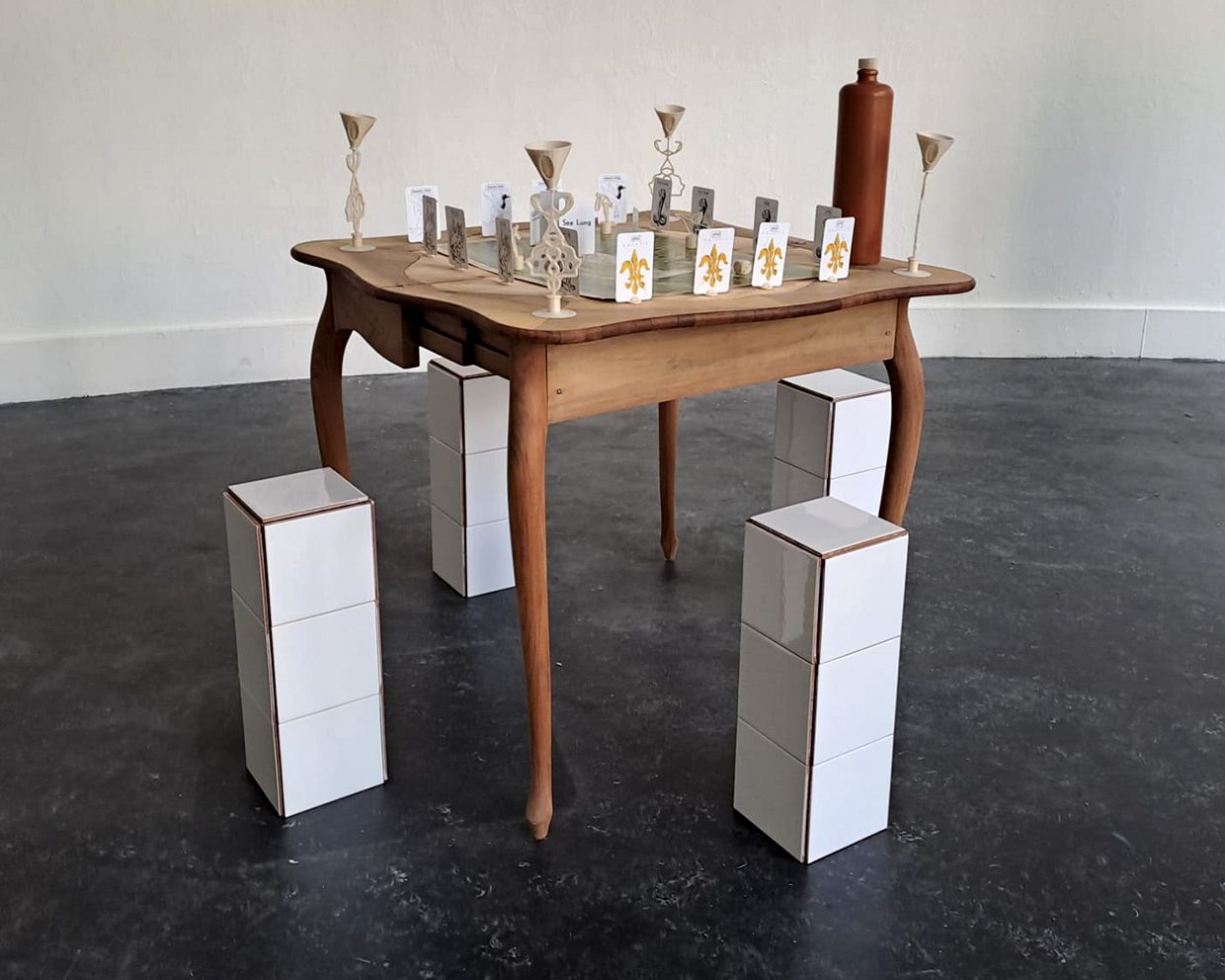
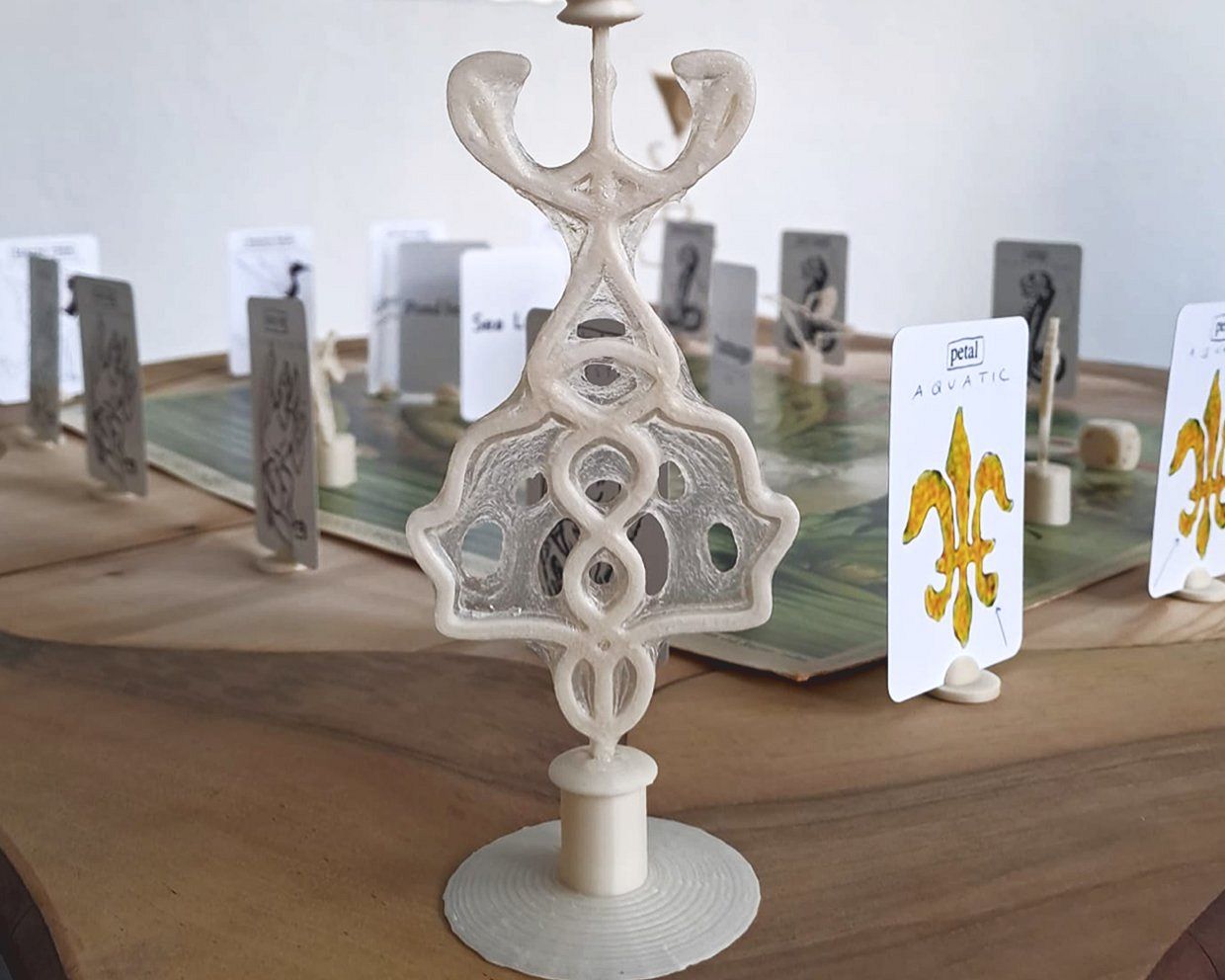
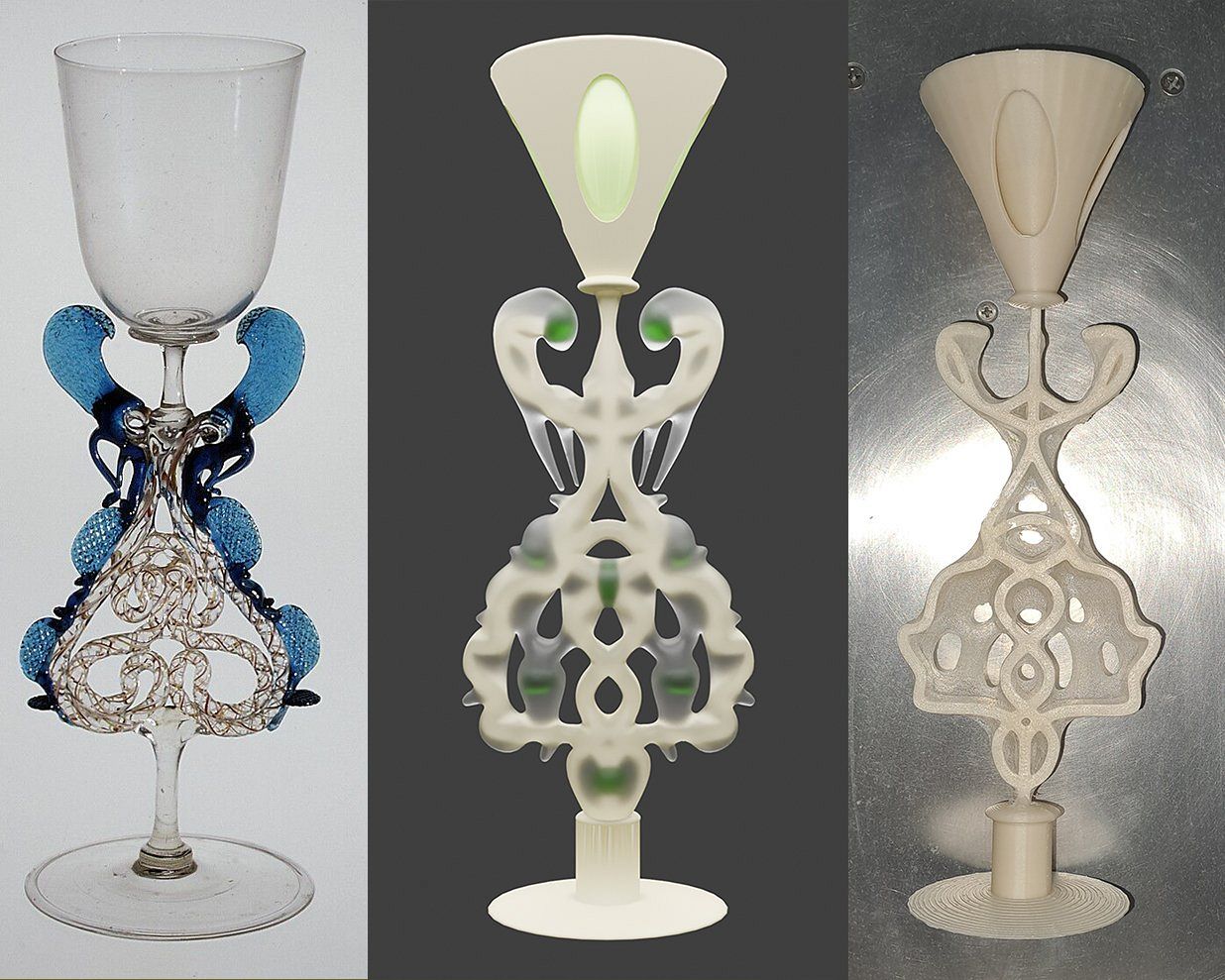
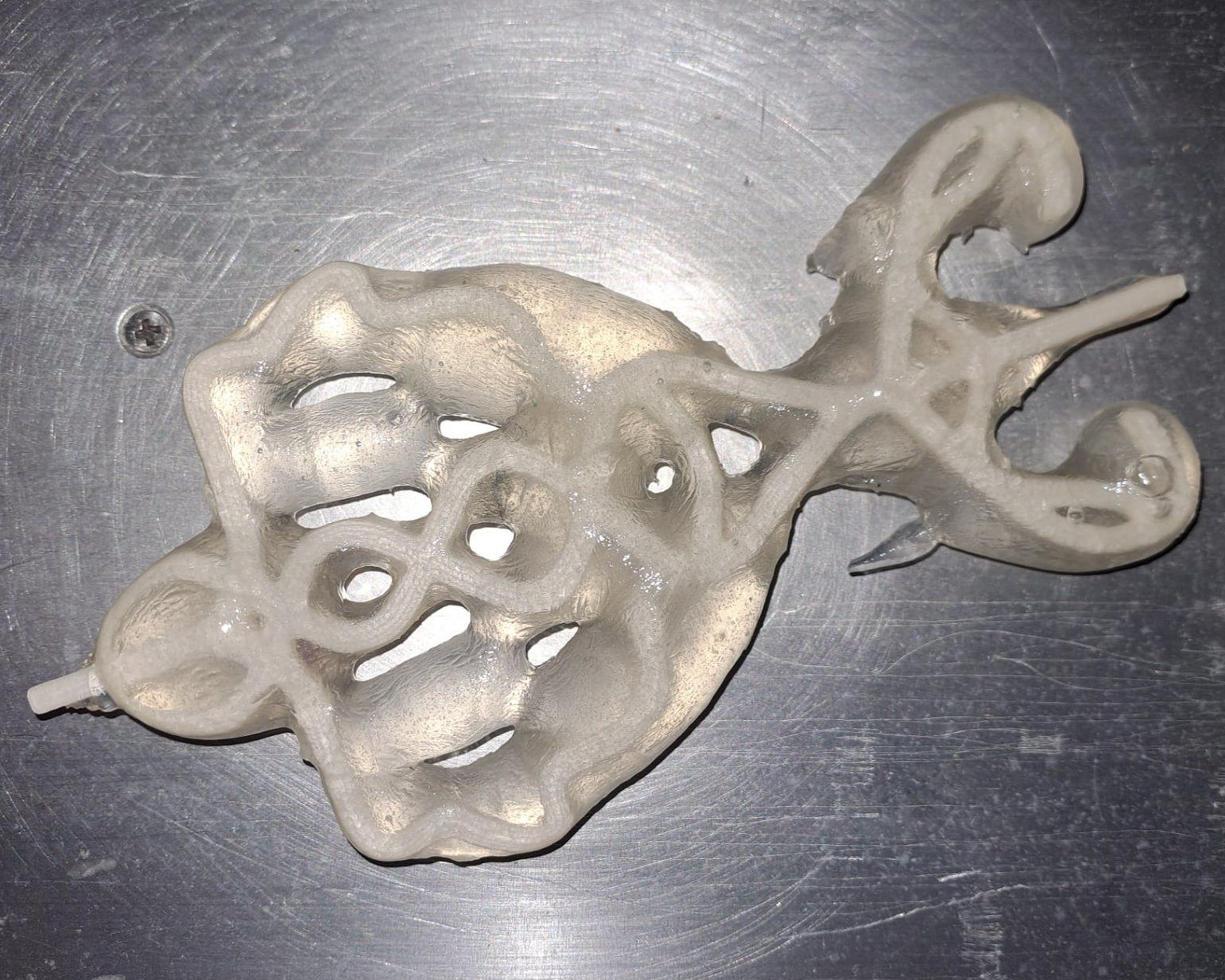
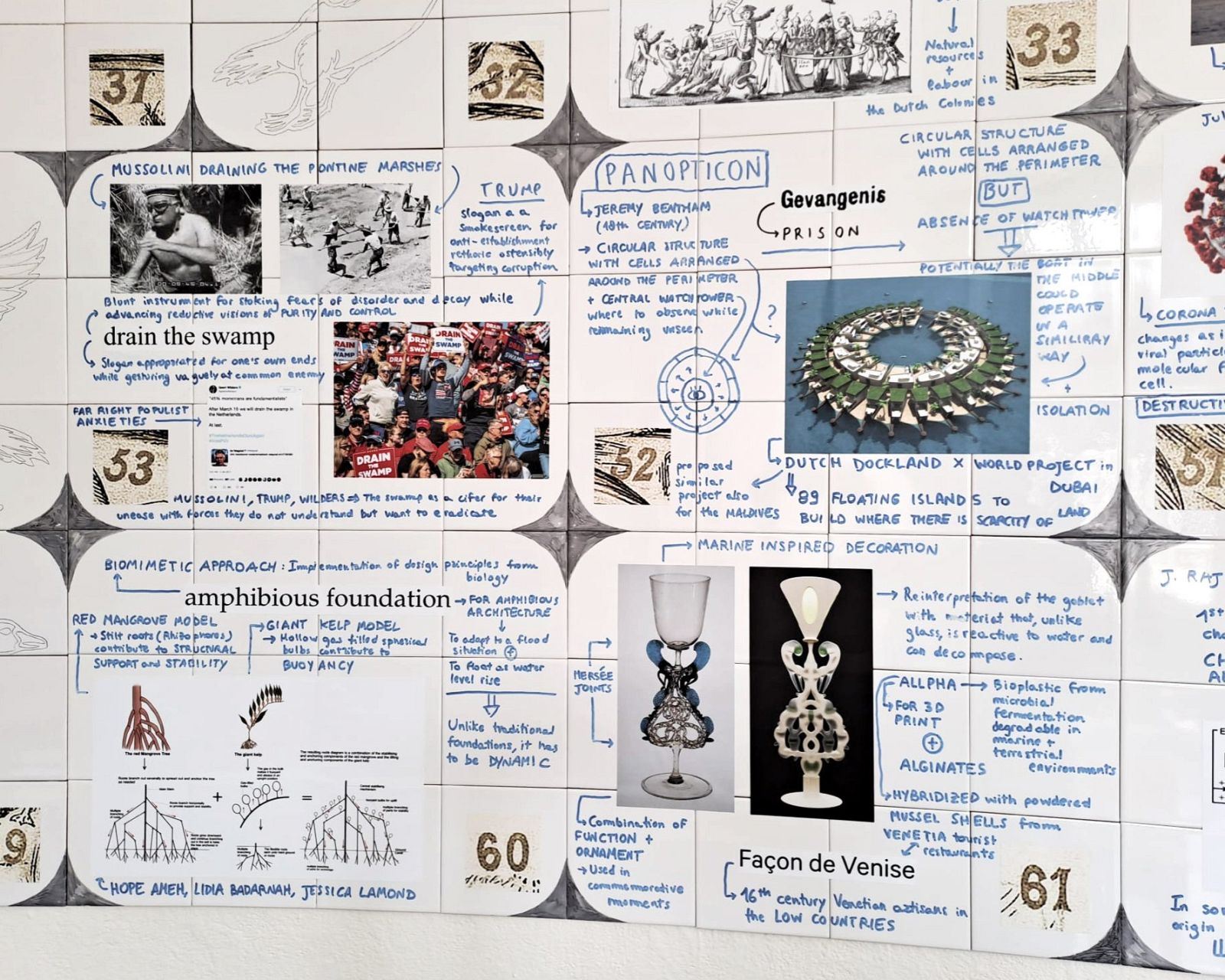
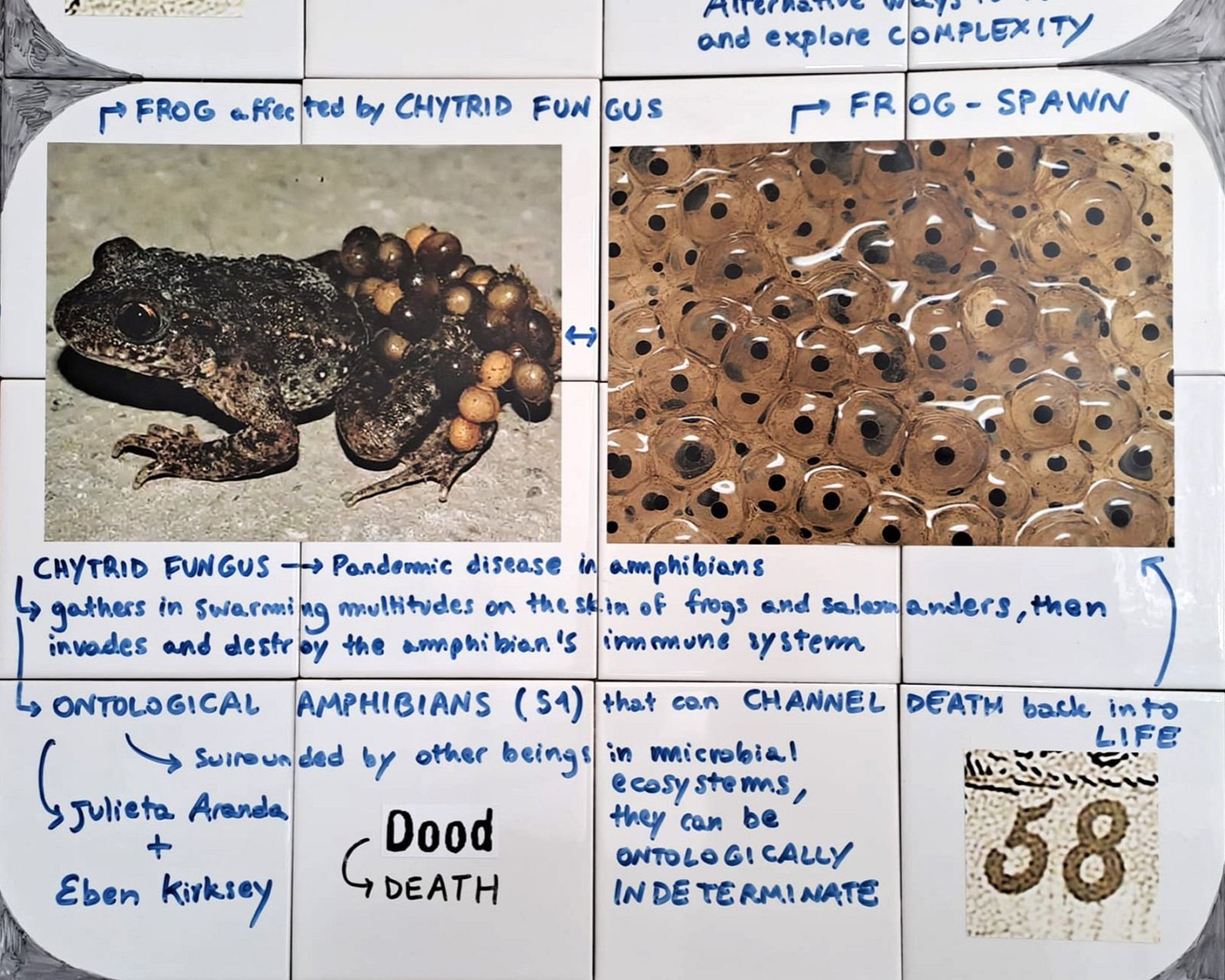
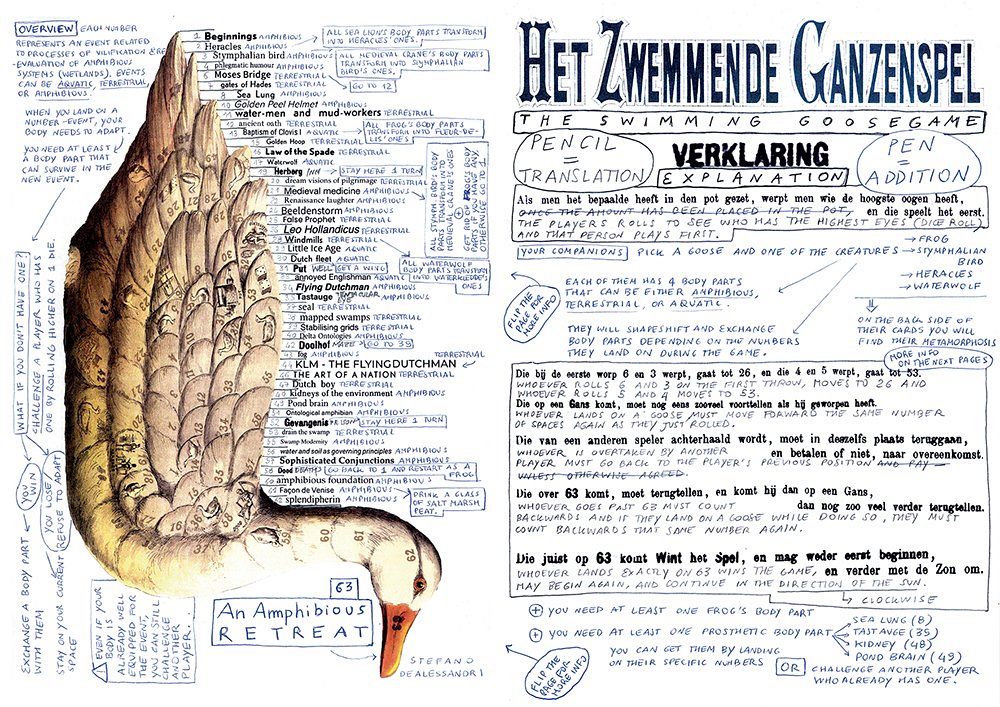
Excerpt from the rulebook of the adapted Goose Game
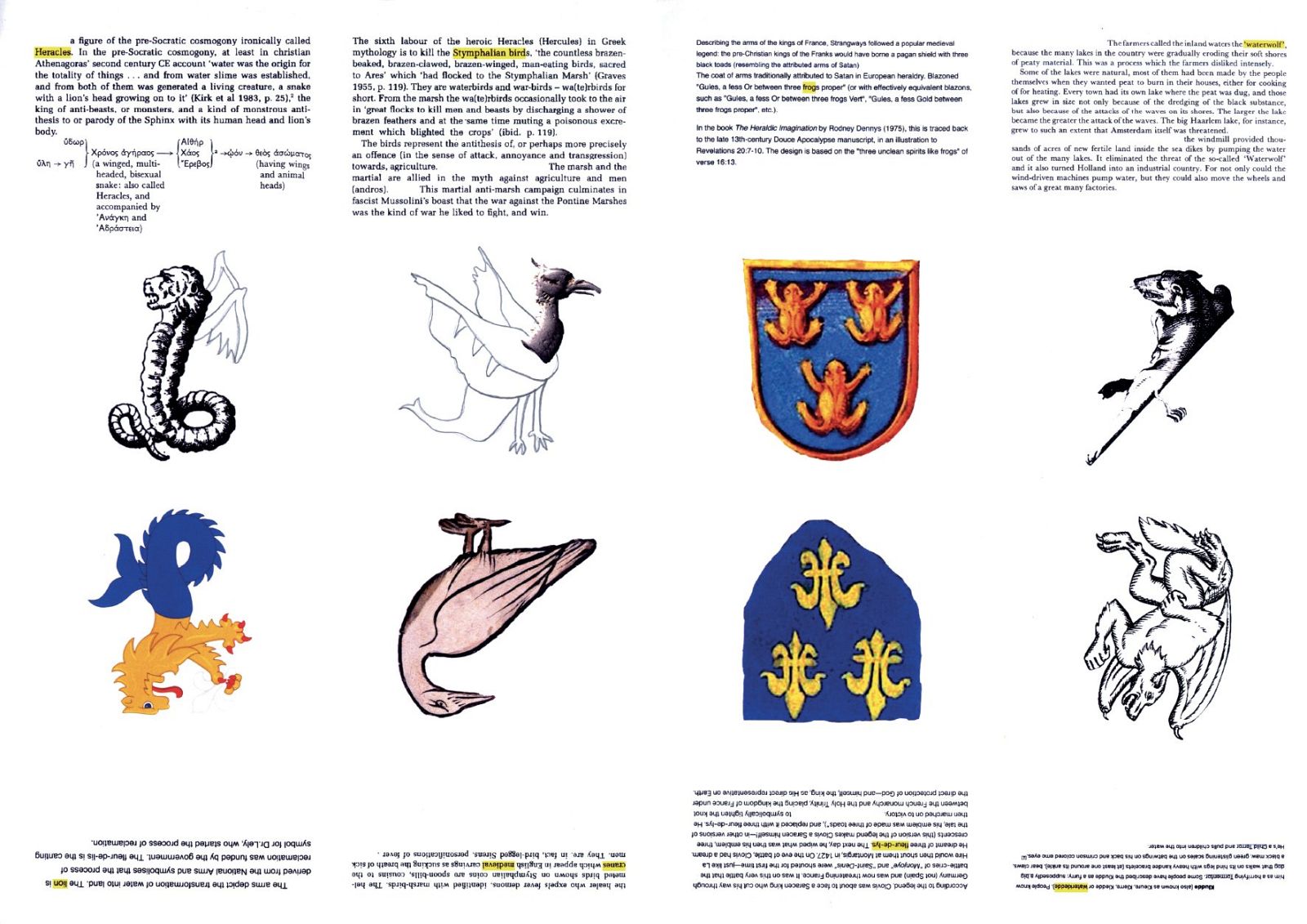
Excerpt from the rulebook of the adapted Goose Game